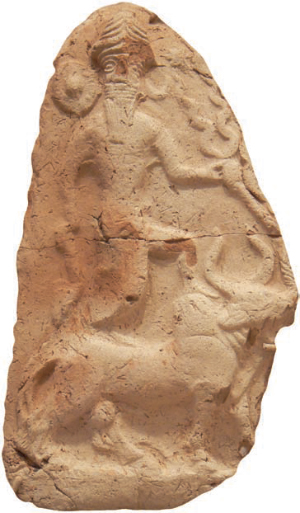The Coming of Zion’s King (9:9–13)
Riding on a donkey (9:9). Though the literature does not always do so, we must distinguish between a donkey (referred to in this passage), and a mule (hybrid between horse and donkey). The mule (Heb. pered) is preferred over the donkey as an official royal mount.66 The evidence for a donkey as a royal mount in antiquity is meager. In Akkadian there is an occasional passing reference to a donkey for the king to ride.67 A Hittite narrative, The Queen of Qanesh and the Tale of Zalpa, has the thirty royal sons driving a donkey, but does not specify that they ride them.68 In Ugaritic literature, the goddess Athiratu rides on a donkey in one text, thus indicating it a regal mount if not royal.69

Figurine of man on donkey
Z. Radovan/www.BibleLandPictures.com
In biblical texts elites occasionally ride on an ʿayir (the second word used in this text (NIV, “colt”; see Judg. 10:4; 12:13) or on an ʾātōn (the third term, foal of a “donkey,” and Balaam’s mount in Num. 22).70 Consequently, evidence is lacking to suggest that the king in this verse is being provided with transparently royal trappings. The contrast offered by the specification of his mount is that this king is not coming in a military context (which would have featured a horse, mule, or chariot), but is coming in peace and humility.71
Proclaim peace to the nations (9:10). Once a king took control of a conquered realm, there was always the fear that the new power would seek to execute vengeance against those who opposed him. It is reassuring that this new ruler will “proclaim peace.” When Cyrus captured Babylon, one of his first official acts was to declare a state of peace.
Against your sons, O Greece (9:13). Continual expansion of Greek trade during the Persian empire led to a wide sphere of Greek influence. At what point this influence was perceived as a potential enemy is unclear. Some think the prophet’s mention is a clear reference to the campaigns of Alexander the Great, though there were several other, earlier occasions when the Persian empire and elements of the Greeks were in conflict.72
The Lord Will Appear (9:14–17)
The Lord will appear (9:14). Numerous elements in this verse (arrow/lightning, trumpet, storms, shield) indicate that the author is using the divine warrior motif familiar throughout the ancient world in all periods and cultures (see sidebar on “The Divine Warrior”).73
Storms of the south (9:14). A traditional way that Israel understood God’s actions is that he comes from the “south” to manifest himself (Deut. 33:2; Hab. 3:3).
